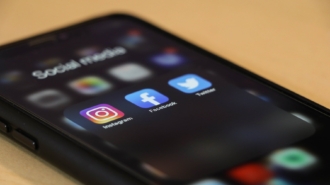Creating a brand ambassador marketing strategy
- Outline your marketing goals
- Gauge your audience
- Identify your brand ambassador types
- Outreach and onboarding
- Keep track of your goals and reach
In the era of social media, audiences are relying more on honest, relatable content from influencers to learn about the products they’re interested in buying. In fact, nearly half of consumers depend on influencer recommendations and 51 percent of marketers depend on influencer marketing to acquire quality customers. It’s plain to see that inviting influencers to be ambassadors for your brand is one of the most effective marketing strategies.
Here are five tips for how to create a brand ambassador marketing strategy to engage with your audience in a meaningful way.
1. Outline your marketing goals
Before you start messaging potential brand ambassadors and scrolling through their social media posts, sit down with your internal sales and marketing teams and outline your goals and the key performance indicators (KPIs) you’ll use to measure success.
For example, are you looking to boost your social media presence? Do you want to engage with your audience on a larger scale but maintain a personal touch in post comments and other communications?
Use your goals and KPIs to shape your outreach and conversion strategies.
2. Gauge your audience
Who are your existing customers? Who else do you want to reach with your campaign? Where and how do these groups intersect?
Figure out who your existing audiences are and where they spend time on the internet. This is a chance for you to truly understand your reach and how your products fit into your customers’ lifestyles. After all, adding something to their cart and clicking the buy button aren’t the only ways that customers interact with your product and brand.
With the abundance of social media platforms and forum threads out there, audiences are always finding new ways to keep up with your brand. By conducting a brand survey, you can find out how your customers and quality leads initially found out about your product, how they keep up with news about your brand, and where they go to research products.
3. Identify your brand ambassador types
Now that you know more about your audience and where they spend their time on the internet, find the influential profiles on those platforms. Are your customers on Instagram? Are they sharing and searching for tutorials and reviews on YouTube? Identify the platform where your business is already well known and then find the accounts your customers go to for product information.
Keep in mind that your brand ambassadors don’t always need profiles with millions of followers. Within the niches of the market, there can be influencers with hundreds or thousands of loyal followers who are more likely to be converted into customers than those with larger followings who generate more views but fewer personal interactions. Strike a balance between getting numbers and making quality connections.
Tap into your loyal product experts by looking to returning customers and employees. Referral programs or gamified loyalty programs are great ways of rewarding customer loyalty while capitalizing on your existing networks.
4. Outreach and onboarding
Reach out to your potential ambassadors and thank them for what they’ve already shared about your company and your products. When asking them to be part of your team, outline the ways you think your audience and their network intersect or compliment one another and what you can both gain from a partnership.
Jotform makes onboarding easy for you with templates like this brand ambassador contract that you can customize with your branding before sending to potential partners.
5. Keep track of your goals and reach
After you’ve outlined and executed your brand ambassador marketing strategy, it’s important to track and measure your efforts to see how they’ve benefitted your business. Some examples of brand ambassador KPIs are social media reach, levels of engagement from your audience, conversions from leads to purchases, and subscriptions to your newsletter.
Keep incentivizing your ambassadors with rewards when they reach their KPI goals, especially loyal customers who are doing your marketing for you with their personal networks.
Offering sponsored content and product samples are great ways to motivate your influencers to make your products part of their regular content offering. They’re also a way of thanking your partners for staying with your brand while establishing a quantifiable channel for you to measure your outreach goals.
Partnering with brand ambassadors is a sure way of engaging with your audience on a personal level while getting the word out about your business. These tips are just the first steps in finding the best way to reach your audience — check out our blog to find other ways of boosting your brand and explore our brand ambassador form templates.
Photo by Andrea Piacquadio





















































































Send Comment: